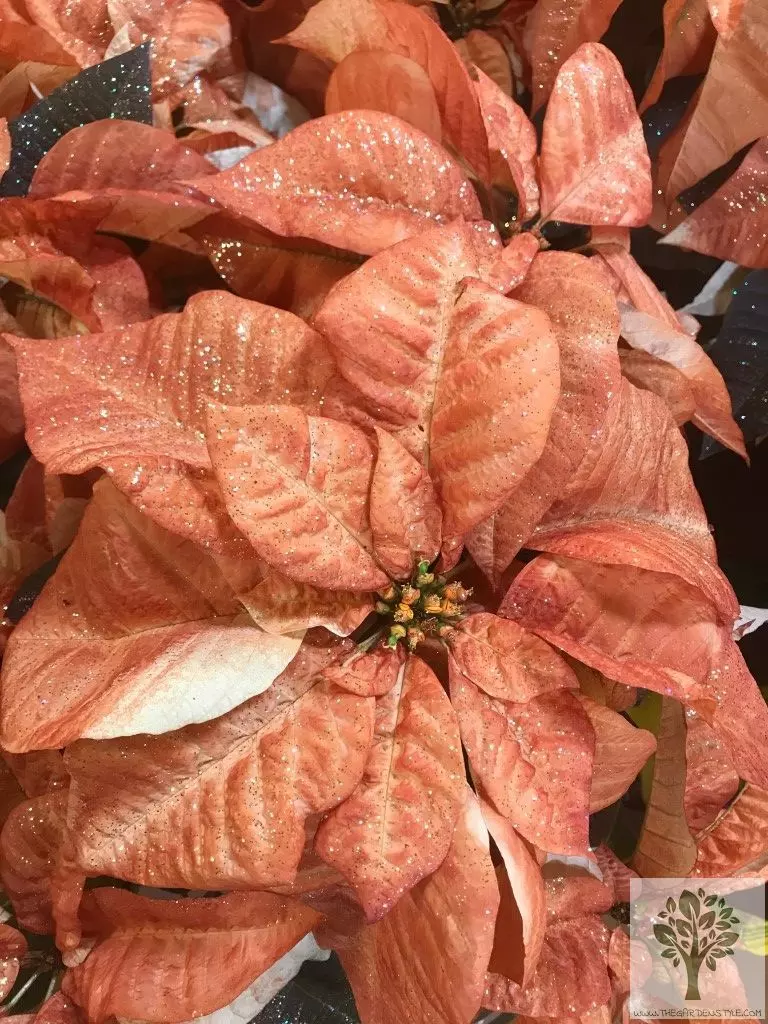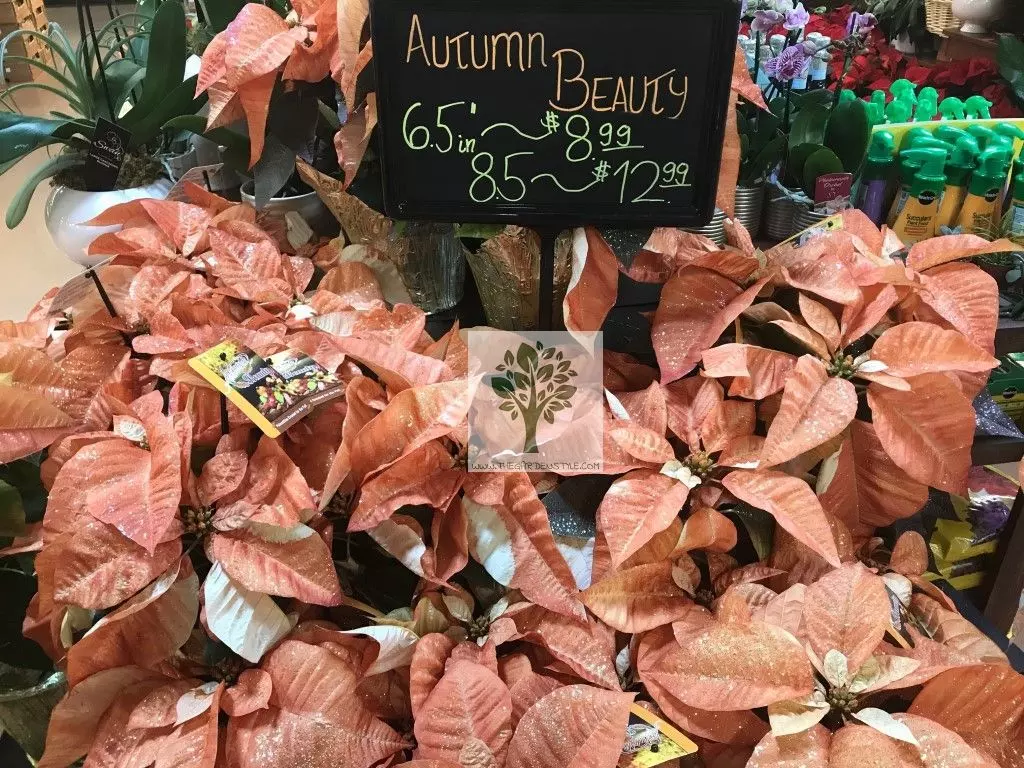Table of Contents
Care for Poinsettias
Poinsettia also called the Christmas flower, is widespread throughout the Americas and can be grown as a shrub in gardens, or as an indoor plant. Its main attraction is the striking red, pink, white or yellowish bracts that adorn the top, and which are often confused with flowers. Learn all about How to Care for Poinsettias, and Watering for Poinsettias (Poinsettias don’t like to be overwatered). How to Make a Poinsettia Re-bloom Next Year.
The scientific name of this species is (Euphorbia pulcherrima), and in other parts of America, it is known as Inca flower, poinsettia, Andean wreath, etc.
Care for Poinsettias – Location
Care for Poinsettias – Location. As previously stated, the Poinsettia can be grown both, as a houseplant (a potted Poinsettia inside the house) and in the garden or patio (where it can reach 16 ft (5 m) in height).
Care for Poinsettias – Temperature and Light
Care for Poinsettias – Temperature and Light. When Poinsettia is outdoors, a site with good lighting should be chosen, not exposed to air currents or sudden temperature changes. It is not recommended to place it in gardens when frequent frosts and temperatures below zero are registered in the area.
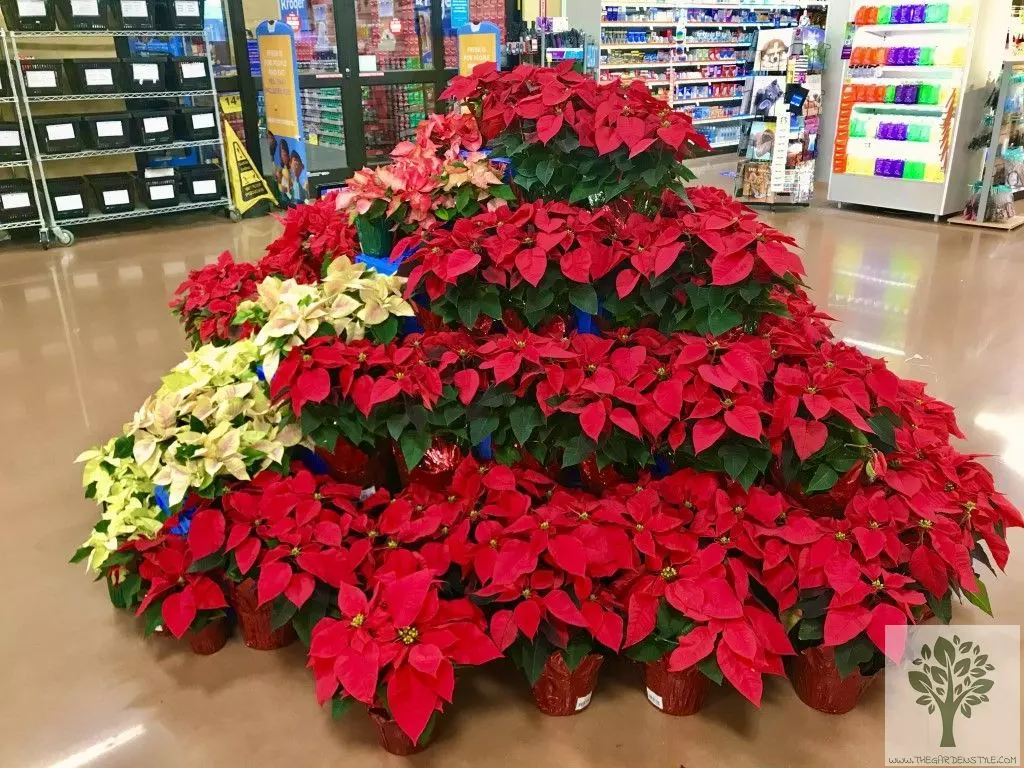
Poinsettia Flowering
The real flowers are very small; they are those little yellow buttons that grow in the center of the rosette that forms the bracts.
Its flowers are one of the best indicators when buying this plant, the more closed the buds the better; it means that it is yet to flower and a good sign that the specimen will last for months.
Its flowers from late fall to late winter, even until early spring, but that will depend on the care given.
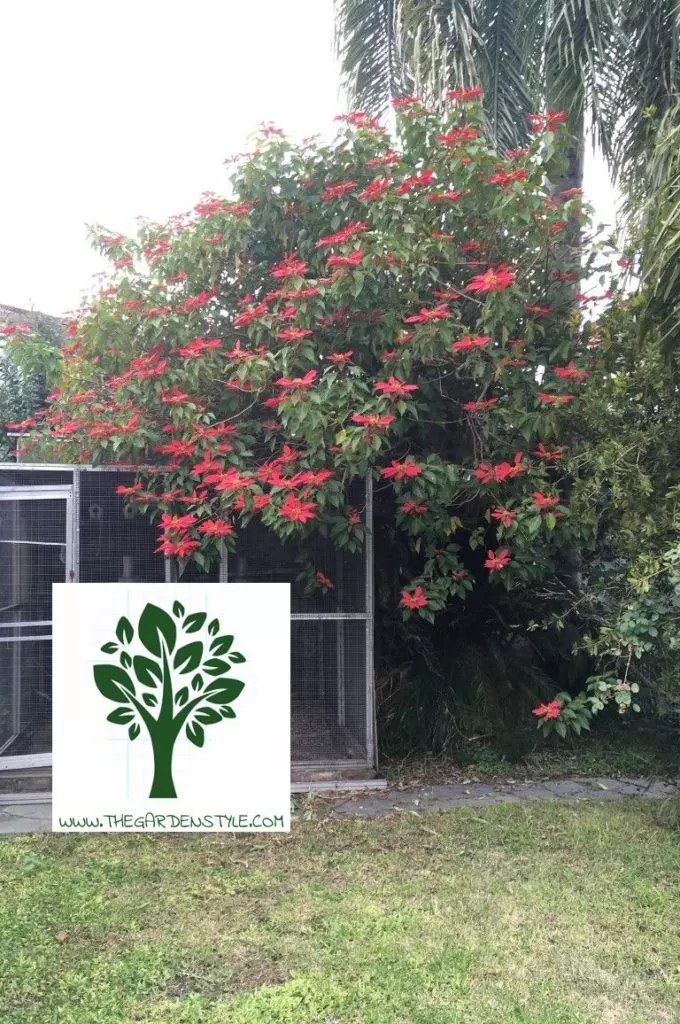
How to Care for Poinsettias: Weather
When planting outdoors, choose a site with good lighting, not exposed to air currents or sudden temperature changes. It is not recommended to place it in gardens when frequent frosts and temperatures below zero are registered in the area.
They should receive as much light as possible when they are in bloom. The leaves fall in low light.
The temperature should be between 59-62 °F (15-17 ºC) at night and 68-77 °F (20-25 ºC) during the day. It should not fall below 50 °F (10 ºC). If the leaves fall without anything happening, perhaps it is because of the cold.
How to Care for Poinsettias: Soil
The most suitable soil for the development of this plant is a well-drained substrate enriched with compost.
Poinsettia Care – Fertilization. Fertilize Poinsettia with a well-balanced fertilizer around the beginning of March. Cut the poinsettia down to around 6″-8″ between the end of March and the start of April. Continue to water and fertilize on a regular basis.
Take your poinsettia outside around the beginning of May, or after the risk of frost has passed, to a shaded place shielded from strong winds. Learn about Growing Poinsettias Outside by following this link.
Don’t forget to water and fertilize on a regular basis. They might be simple to overlook if they are not in a prominent location.
It is better to gradually introduce them to the light over a week or two, beginning with the morning sun only. You may also repot or plant the plant in the ground at this time if you have a well-drained bed with enough organic materials mixed in.
If it becomes too large, a second pruning may be required in August.
Watering Poinsettias: How Often Do You Water Poinsettias
How Often Do You Water Poinsettias – Watering Poinsettias. As for the watering, at the beginning it should be abundant but always when the soil has completely absorbed the water of the last application, to avoid the excess humidity.
Once a week, water the Poinsettia when the pot gets lightweight or the soil seems dry to the touch. Before relocating the plant, properly water it in a sink and allow it to drain. If the Poinsettia is foil-wrapped, tilt the plant while keeping the rootball in place and dump the excess water into the sink.
I would remove the Poinsettia from the foil or make some holes in the bottom of the foil to enable the water to flow out when it is irrigated for a healthy start. I would take it out of the basket if it was in one to water it.
When watering your poinsettia, avoid getting water on the leaves and instead go straight to the roots and dirt. I water mine in the sink because I can pour a lot of water on it and it will drain out the bottom. Poinsettias don’t like to be overwatered, so just water them when they need it (when the soil feels dry to the touch).
While it is in flower, it is convenient to water Poinsettias a couple of times a week without letting them dry out.
Watering Poinsettias Tip. When the flower has been lost you can reduce the watering to once a week.
During watering, care should be taken that the water drops do not reach the colorful bracts surrounding the small yellow flowers, to prevent the appearance of unsightly spots or loss of pigmentation.
Potted Poinsettias Growing Indoors. When growing indoors, it is recommended not to water the soil directly, but to place the pot on a plate with water for about 15 minutes, repeating the task twice a week, but taking care that between watering the substrate is partially dry.
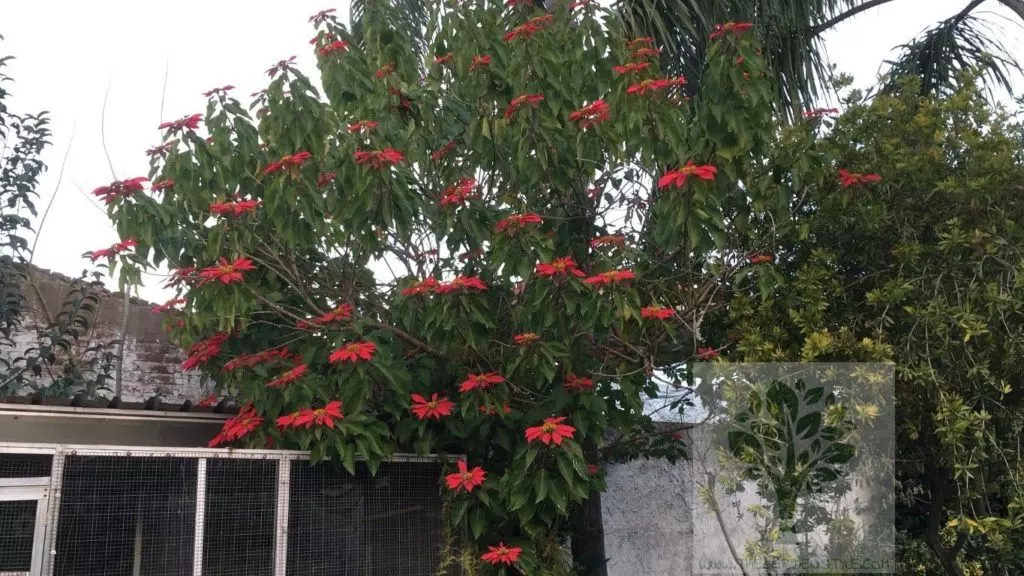
Poinsettias Propagation
Poinsettias Propagation. Its propagation is by pollination, and the most common is by cutting, you should cut a branch of 6” – 8” (15-20 cm) and spread it with rooting hormones at the tip, placed directly in the substrate.
It should be placed in a greenhouse or a place without air currents, rather than closed with filtered light, a window with transparent curtains is ideal for light. If you want to learn more about the propagation of poinsettias, I recommend our article about how to propagate poinsettia.
How to Make a Poinsettia Re-bloom Next Year
How to Make a Poinsettia Re-bloom Next Year. Keep in mind our next advice to achieve good flowering and its striking red leaves.
A Poinsettia is a plant that needs to go into dormancy after its flowering season, as is the case with many others. Place the Poinsettia in a cool place away from heat sources. In this way, the poinsettia will enter those months of “rest it needs”.
When the leaves have fallen and it loses their bracts, cut the branches leaving stems of between 2” – 4” (5-10 cm), with disinfected and very sharp pruning shears, in diagonal cuts. The cut stems can be used as pointed cuttings, to multiply the plant.
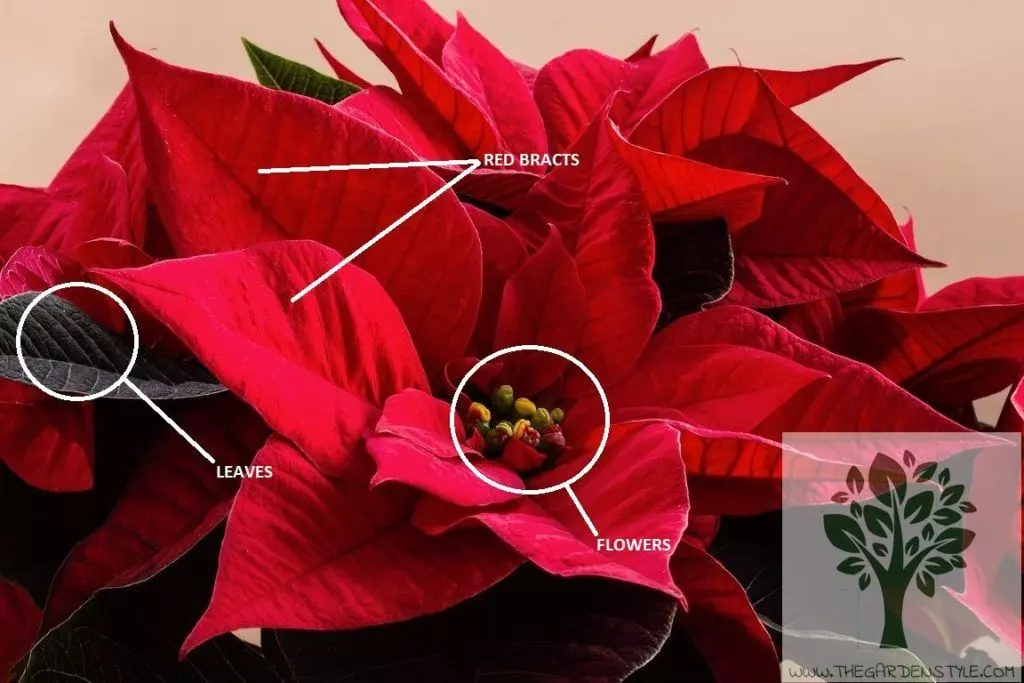
In spring, with the arrival of heat, it is necessary to transplant it. Use universal substrate mixed with earthworm humus and sand, making sure that the mixture will offer very good drainage and a high contribution of nutrients.
For it to bloom again, 12 hours of absolute darkness are required. For this, you must cover it during the night with black plastic and uncover it in the morning. Also, avoid bringing it close to sources of heat.
If you follow all these steps, it is very probable that when the holidays come, your plant will show some bracts of a very bright red, and you can use it to decorate or as a centerpiece. If it still resists, you can use special fertilizers for the plant, which favor the coloration.
- SPRING FLOWER: This beautiful Superbells Lemon Slice calibrachoa is definitely an attention grabber! It has bright yellow flowers with white accents that really stand out and make a beautiful pattern. They thrive in containers or raised beds!
- GROWTH: This calibrachoa will grow to be about 12 inches tall with a spread of up to 24 inches.
- CARE: These plants are fairly low-maintenance. The biggest thing to consider is that they need to be in well-draining soil so that their roots don't rot. The will thrive in a sunny spot but it is recommended to plant them in containers or raised beds so they have good drainage. When it comes to watering, you'll only want to water them when the soil is dry. Fertilize about once a month for best growth!
- Instantly feeds all indoor houseplants
- For all indoor plants, including edibles
- Feeds instantly
Poinsettias Created for the Fall
Poinsettias Created for the Fall. There are other varieties created for special moments like fall and Thanksgiving day.
This is our guide on How to Care for Poinsettias.
